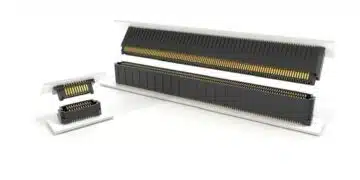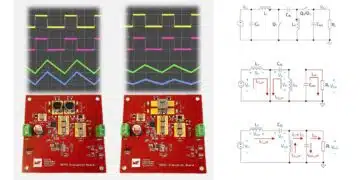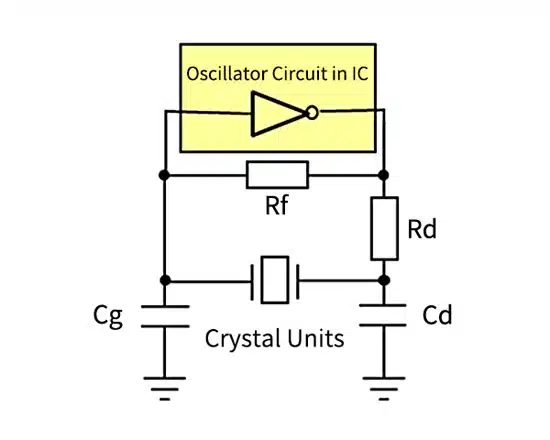This article based on KYOCERA technical note explains what is a clock oscillator and how it works.
Crystal devices are used in a variety of electronic devices essential to our lives, from consumer electronics, automobiles, and communications equipment to transportation infrastructure, FA equipment, and medical equipment. Among them, clock oscillators are easy to work with and particularly useful as frequency sources.
How Crystal Units Work
Before getting into clock oscillators, let’s first give some background about “crystal units.”
A crystal unit is a “passive component” – meaning it does not operate on its own. Therefore, it controls various electronic devices using the piezoelectric phenomenon that causes strain and vibration when voltage is applied to a crystal.
In order to convert the mechanical vibration generated by the piezoelectric phenomenon into an electrical signal and obtain the frequency, an oscillation circuit that can continuously produce the frequency by oscillating a vibrator is required.
What are passive parts?
Components that consume, store, and release electrical energy supplied from the outside. Examples include resistance, capacitors, coils, etc. In contrast, “active components” are capable of amplifying, rectifying, and converting supplied electrical energy. Examples of these include transistors, integrated circuits, etc.
How to Make a Crystal Unit Oscillate
In order to generate oscillations, a matching process is required to match the oscillation circuit and the Rf , Rd , Cd, Cg of the quartz crystal to suitable values for oscillation.
If the matching is insufficient, system failures such as frequency shift, abnormal oscillation, output level drop, and oscillation stop may occur.
- Rf=Feedback Resistor
- Rd=Power Limiting Resistor
- Cd,Cg=Load Capacity
What is a Clock Oscillator?
Clock oscillators are designed by crystal device manufacturers to provide customers with the best possible oscillation state by combining an oscillation circuit and a crystal resonator into a package.
By simply applying voltage, you get a clock signal of the desired frequency.
What is a Clock Signal?
A periodic electrical signal that “ticks” at regular intervals. This allows the timing of actuation to be synchronized among multiple electronic circuits.
Main Applications of Clock Oscillators
As noted above, clock oscillators are used in various electronic devices essential to our lives, from home appliances, automobiles, and communications equipment to transportation infrastructure, FA equipment, and medical equipment.
If you know what frequency you need, you can search for the optimal clock oscillator in the vendor PN list.



































